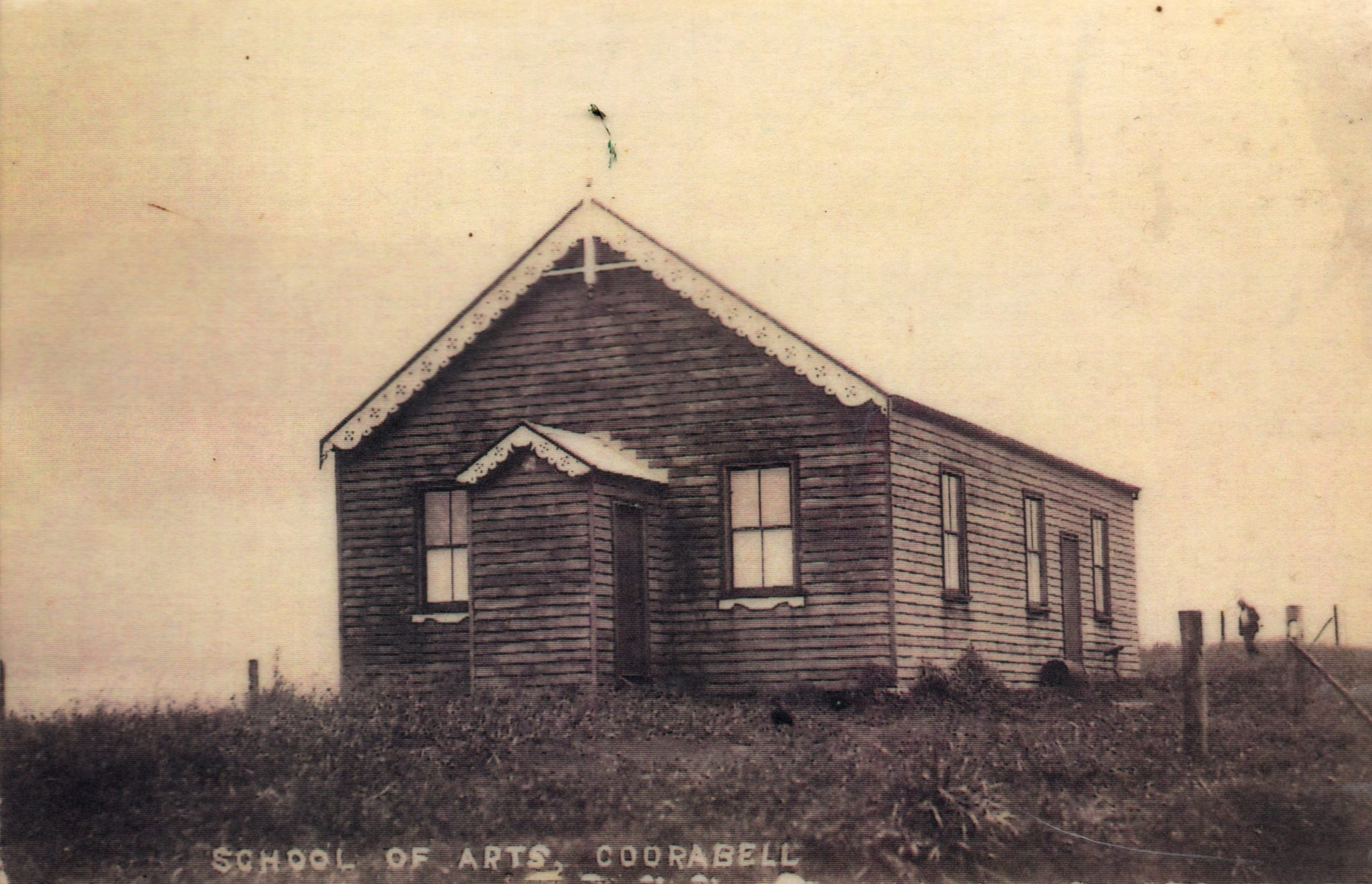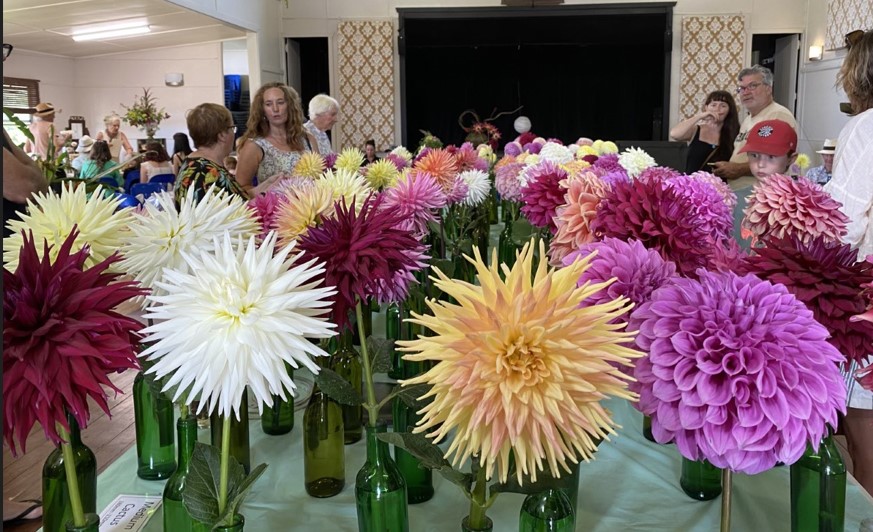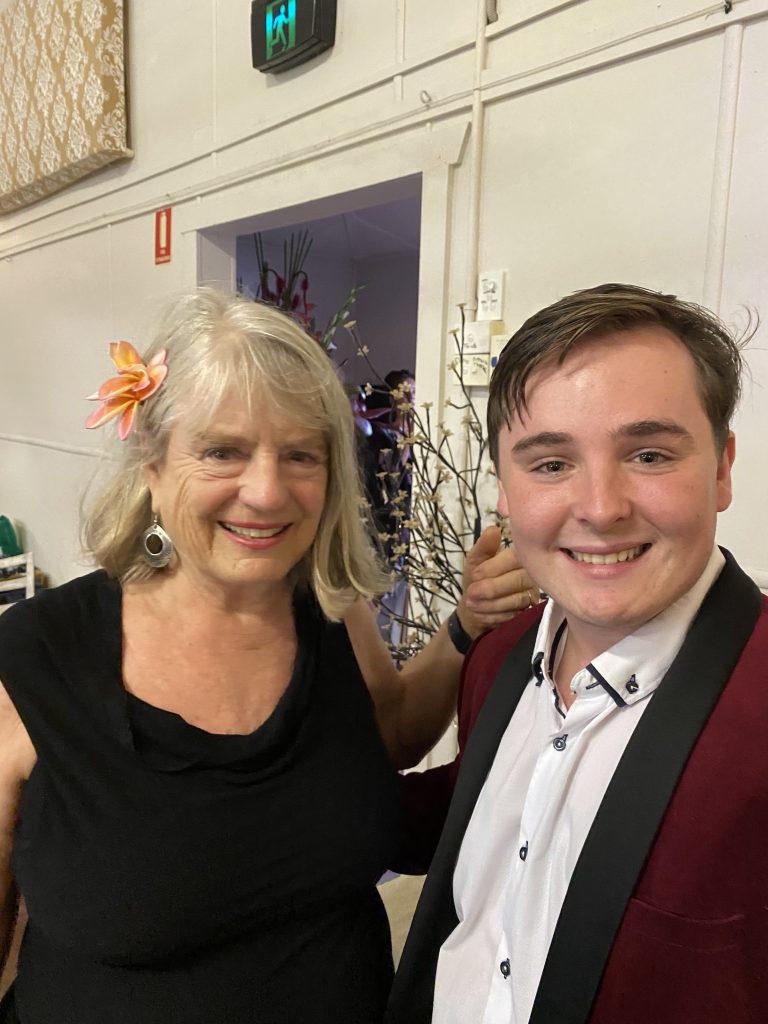
A tiny team of volunteers keep the action happening and the lights on, in the historic hall on the hill. Christobel Munson investigates its origins and how it’s done.
The Wiyabal people of the Bundjalung nation are said to be the original inhabitants of Coorabell, located on the tip of the ridge rising 156m above sea level. Some say the word ‘Coorabell’ means ‘many hoop pines’, but it’s more likely to mean ‘home of the winds’. Anywhere along the ridge, it’s rare to find a wind-free day.
Despite the incessant wind, the views from Coorabell Hall are spectacular. Early white settlers started arriving around here in the late 1800s, first to plunder the finest trees from the Big Scrub, like the valuable red cedar. Trees were dragged to the top of the ridge, stripped of their bark, and shoved down the slopes – known as the Shoots – from the ridge to waiting bullock trains below, which transported the logs to a wharf in Byron Bay. From there, they were shipped around the world.

Once the trees were out of the way, dairying was the next big thing. Just about every property along Coolamon Scenic Drive (originally Coorabell Road) in the 19th and 20th centuries was a 100-acre dairy – an industry which peaked in the 1930s.
By 1907, Coorabell had a general store, a blacksmith, a butcher, fruit shop, boarding house, church, school, and from 1906, a public hall set up as a School of Arts. As a centre for all community functions, the hall offered a chance for locals to meet neighbours and friends, for celebrations, weddings, dances, euchre tournaments and clearing sales – all helping to raise funds to keep the hall operating.
The hall’s first flower show was held in 1959, organised by the Ladies Auxiliary to raise funds towards lining and painting the hall’s interior. The annual flower show tradition has been revived by a modern-day version of the Ladies Auxiliary. Today, a diverse – and very active – handful of six volunteers keeps the lights on at the hall, keeping alive its origins as a community hub. The annual March Flower Show is still the hall’s highest profile event, held midway through the peak dahlia season, primarily to celebrate the amazing blooms of Bruce and Stephen Wedd from nearby Possum Creek.

Lissa Coote is the hall’s prime mover and shaker, inventively creating ways to keep useful and highly skilled background in the film industry, she prides herself on “making something out of nothing”. It helps to have a lawyer on board, and Adele Smout is her ‘right hand’ in creating countless activities for this very active community hub.
A glance at the hall’s September newsletter, put together by Lissa and Adele, lists everything from a live ‘Magical Evening of Cabaret Theatre’, to the fortnightly Sunday Crop Swap (useful to share your excess produce with other locals for free), and ongoing raffles. On the first Wednesday of the month, the Coorabell Film Club screens a classic movie, while the work of talented local artists is exhibited in the Artspace.
Regular weekly events include both a coffee cart – a big hit with passing tradies – and the Hilltop Café, selling toasties and juices from a kitchen with surely one of the best views in the district. Monday night is pizza night; the first Wednesday of the month there’s Thai food from 6–7.30pm; while on Friday nights it’s Fun Friday, with Kamal Singh’s Punjabi curry and games (such as Scrabble, ping pong, mahjong and foosball); and on Sundays, enjoy the Trusty Dumpling or El Polaco Latin fusion food depending on the week. Needless to say, the hall is available to rent for weddings or other celebrations.
The next major event is billed as an Epic Fundraiser on 25 October, with a sculpture show planned pre-Christmas.
The hall receives no federal, state or local council funding, so it’s up to the innovative team to find ways to cover its costs. Lissa meets with volunteers from other local halls – Newrybar, Marvell Street, Eureka, Federal and Ewingsdale – to share ideas on ways to keep the doors open. In Lissa’s view, obtaining a liquor licence has been a “huge step up” (and very popular on Fridays from 5–7.30pm). Lissa and the team found $65,000 to build a very popular outside deck, well used at every event, and she’s already dreaming of relocating the toilet block and creating a “proper” bar, once she works out how to raise the cash.
565 Coolamon Scenic Drive, Coorabell
Historical information sourced – and gratefully acknowledged – from Coorabell School and District – the first 100 years, compiled by Ellenor Wadsworth, published by The Coorabell School Centenary Committee, June 1991.
Feature image the original Coorabell Hall All photos supplied by Lissa Coote
The School of Arts movement
The School of Arts movement in New South Wales, particularly in Sydney, played a transformative role in shaping adult education, community life and cultural development throughout the 19th and early 20th centuries.
Beginning in Scotland in the early 1800s, it was driven by Enlightenment ideals of scientific education, self-improvement and social reform. The aim was to educate artisans and mechanics in practical sciences, with the belief that this would uplift individuals and benefit society.
The School of Arts concept reached Sydney in 1831 via a group of Scottish tradesmen and educators. In 1833, the Sydney Mechanics School of Arts was established to spread scientific and useful knowledge through the new colony. Public lectures were held in School of Arts halls, alongside libraries and classes in science, art and political economy.
Over the next century, around 750 Schools of Arts or Mechanics Institutes were established across NSW, becoming hubs of community life, education and culture. Their legacy includes the establishment of public libraries, community centres and adult and technical education systems. The Sydney Mechanics School of Arts directly influenced the creation of institutions such as the University of Sydney and Sydney Technical College – which later became the University of Technology Sydney (UTS).